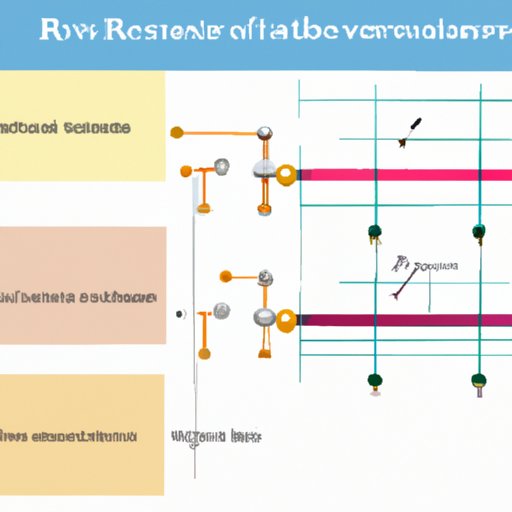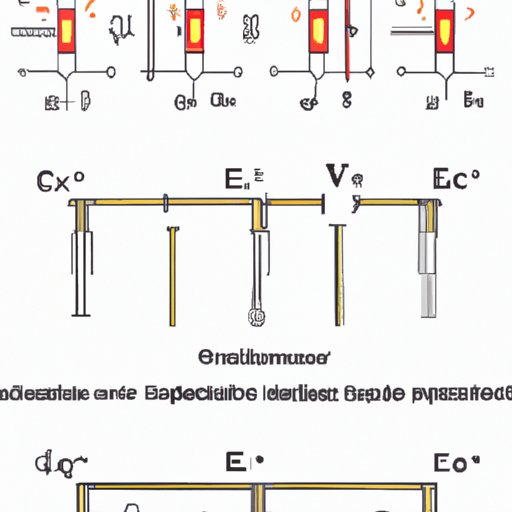Introduction
Resistance is one of the most important concepts in science and engineering. It is used to describe the opposition that a material or object offers to the flow of electrons or other particles. This article will explore what resistance means in science and provide a comprehensive guide to understanding the concept.
Explaining Resistance in Science: What Does it Mean?
In order to understand what resistance means in science, it is important to first define the term. Resistance is defined as “the opposition offered by a body or substance to the passage of an electric current” (Oxford Dictionary). In other words, it is a measure of the difficulty with which electrical current passes through a material.
There are many examples of resistance in everyday life. For instance, when you turn on a light switch, the electrical current must travel through a wire before it reaches the bulb. As the current passes through the wire, it encounters resistance from the material it is passing through. This resistance causes some of the energy to be lost in the form of heat, resulting in the bulb not being as bright as it could be.
It is also important to note that there are two different types of resistance: electrical and magnetic. Electrical resistance is the opposition to the flow of electric current in a conductor, while magnetic resistance is the opposition to the flow of magnetic flux in a material (such as iron).

The Physics Behind Resistance: A Guide to Understanding the Concept
Now that we have a basic understanding of what resistance means in science, let’s take a look at the physics behind it. In order to understand how resistance affects current flow, it is helpful to use the example of a water pipe. When water is flowing through a pipe, it encounters resistance from the walls of the pipe. This resistance causes the water to slow down, resulting in less water reaching its destination than if the pipe had no resistance. The same is true for electricity – when it passes through a material, the material’s resistance will cause the current to slow down, resulting in less electricity reaching its destination.
Another important concept to understand when discussing resistance is Ohm’s Law. This law states that the voltage across a resistor is equal to the current through it multiplied by the resistance. Using this equation, it is possible to calculate the resistance of a material by measuring the voltage and current passing through it. This can be helpful when designing electrical circuits, as it allows engineers to determine the amount of resistance needed to achieve a desired result.
How to Calculate Resistance Using Ohm’s Law
Calculating resistance using Ohm’s Law is relatively simple, but requires a few steps. First, you need to measure the voltage across the resistor and the current through it. Once these values are known, you can use the formula V=IR (where V is the voltage, I is the current, and R is the resistance) to calculate the resistance.
For example, if you measure a voltage of 12V across a resistor and a current of 2A through it, then the resistance can be calculated using the formula R = V/I = 12V/2A = 6Ω. This means that the resistor has a resistance of 6Ω.

A Comprehensive Guide to the Different Types of Resistance
Now that we understand how to calculate resistance using Ohm’s Law, let’s take a look at the different types of resistance. Generally speaking, there are four main types of resistance: electrical, thermal, chemical, and magnetic.
Electrical Resistance is the opposition to the flow of electric current in a conductor. It is measured in units of ohms (Ω) and is affected by the length and cross-sectional area of the conductor, as well as the material it is made from.
Thermal Resistance is the resistance to the flow of heat through a material. It is measured in units of kelvins per watt (K/W) and is affected by the material’s thermal conductivity and thickness.
Chemical Resistance is the resistance to the flow of chemicals through a material. It is measured in units of moles per liter (mol/L) and is affected by the material’s porosity, surface area, and chemical composition.
Magnetic Resistance is the resistance to the flow of magnetic flux in a material. It is measured in units of amperes per meter (A/m) and is affected by the material’s permeability.
How Resistance Affects Electrical Circuits and Devices
Understanding how resistance affects electrical circuits and devices is essential for anyone working in the field of electronics. In a circuit, resistance acts like a bottleneck – it limits the amount of current that can pass through the circuit at any given time. This can have a major impact on the performance of the circuit, as too much resistance can cause the circuit to become overloaded.
The effects of resistance can also be seen in electronic devices such as computers and cell phones. In these devices, resistance plays an important role in controlling the voltage and current levels, ensuring that they remain within safe limits. Without resistance, the voltage and current levels could become dangerously high and cause the device to malfunction or even explode.

Understanding the Role of Resistance in Physics
Finally, it is important to understand the role of resistance in physics. In general, resistance is related to energy and power. When an electric current passes through a resistor, the resistor dissipates some of the energy as heat. This energy is converted into power, which is measured in watts (W). In addition, the resistance of a material also affects its ability to store electrical energy, as materials with higher resistances require more energy to charge them.
Examining the Effects of Temperature on Resistance
It is also important to consider the effects of temperature on resistance. Generally speaking, the resistance of a material increases as its temperature rises. This is due to the fact that the atoms in the material vibrate more quickly as the temperature increases, making it more difficult for the current to flow. This phenomenon is known as temperature dependence of resistance.
The impact of temperature on resistance can be significant, especially in electronic devices. If the temperature of a device becomes too high, the resistance of its components may increase to the point where the device cannot function properly. As such, it is important to ensure that the temperature of the device remains within safe limits.
Conclusion
In conclusion, resistance is an important concept in science and engineering. It is used to describe the opposition that a material or object offers to the flow of electrons or other particles. This article has provided a comprehensive guide to understanding what resistance means in science, including how to calculate resistance using Ohm’s Law, the different types of resistance, and how resistance affects electrical circuits and devices. Additionally, the effects of temperature on resistance have been discussed. With this information, you should now have a better understanding of the concept of resistance and how it applies to science.
(Note: Is this article not meeting your expectations? Do you have knowledge or insights to share? Unlock new opportunities and expand your reach by joining our authors team. Click Registration to join us and share your expertise with our readers.)
